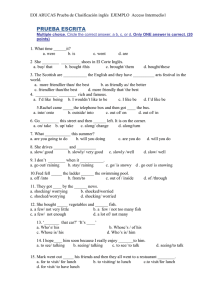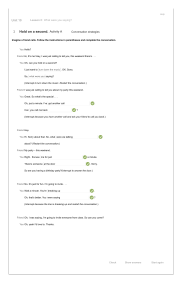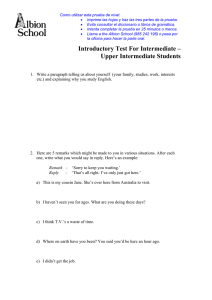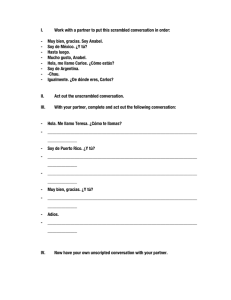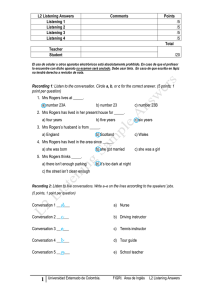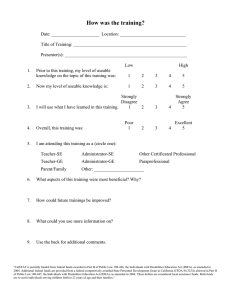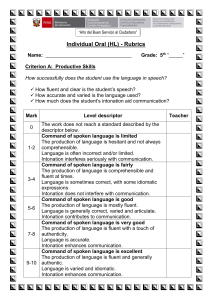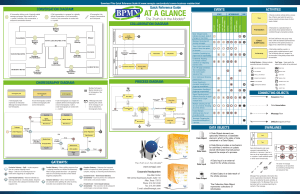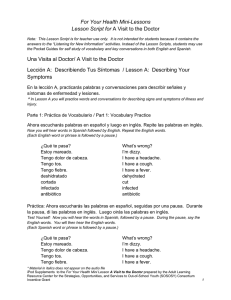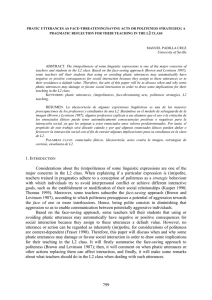B1 +
Anuncio
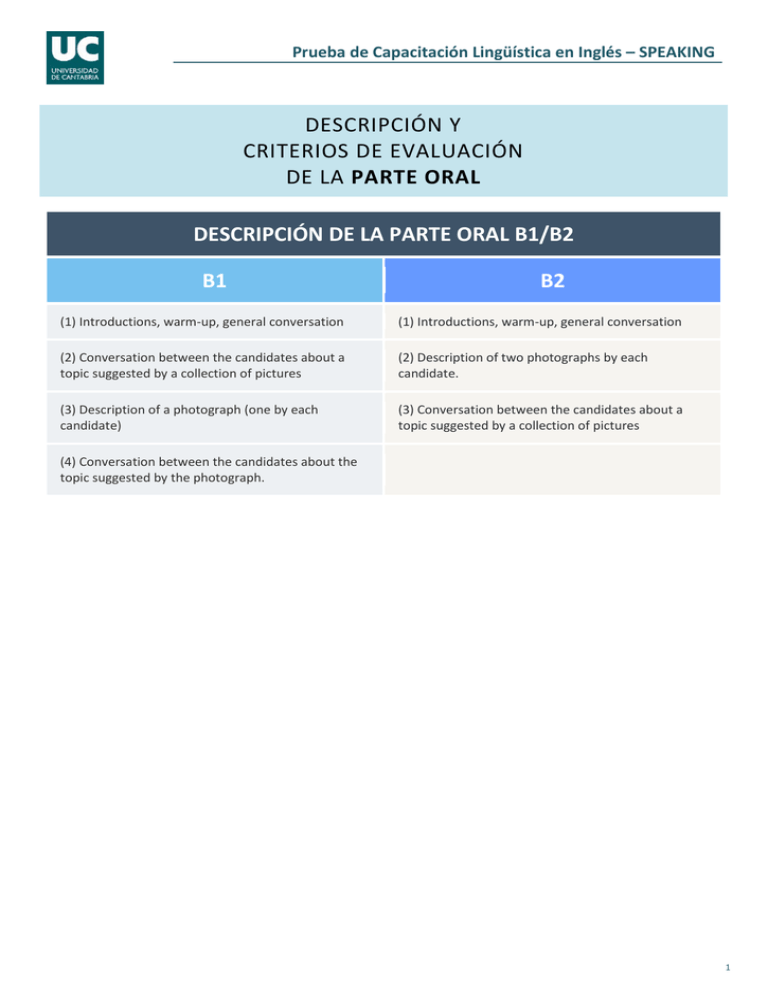
Prueba de Capacitación Lingüística en Inglés – SPEAKING DESCRIPCIÓN Y CRITERIOS DE EVALUACIÓN DE LA PARTE ORAL DESCRIPCIÓN DE LA PARTE ORAL B1/B2 B1 B2 (1) Introductions, warm-up, general conversation (1) Introductions, warm-up, general conversation (2) Conversation between the candidates about a topic suggested by a collection of pictures (2) Description of two photographs by each candidate. (3) Description of a photograph (one by each candidate) (3) Conversation between the candidates about a topic suggested by a collection of pictures (4) Conversation between the candidates about the topic suggested by the photograph. 1 Criterios de evaluación de la Prueba Oral. Capacitación Lingüística en Inglés B1 NOMBRE Y APELLIDOS: __________________________________________________________________ B1 RANGE ACCURACY FLUENCY INTERACTION PRONUNCIATION OVERALL (Pass Mark: 50%) + (Pass Mark 10/20) - Has enough language to get by, with sufficient vocabulary to express him/herself with some hesitation and circumlocutions on topics such as family, hobbies and interests, work, travel and current events. /20 Uses reasonably accurately a repertoire of frequently used ‘routines’ and patterns associated with more predictable situations. /20 Can keep going comprehensibly, even though pausing for grammatical and lexical planning and repair is very evident, especially in longer stretches of free production /20 Can initiate, maintain and close simple face-toface conversation on topics that are familiar or of personal interest. Can repeat back part of what someone has said to confirm mutual understanding /20 (Prosodic features): The stress and intonation usually correspond to the intended message. Although a foreign accent is evident, the utterances are generally understandable. (Individual sounds): Can articulate individual sounds well for the utterances to be understood most of the time. /20 Very poor Weak Pass Good Very good 0-30 30-40 50 60-80 90-100 / 100 Criterios de evaluación de la Prueba Oral. Capacitación Lingüística en Inglés B2 NOMBRE Y APELLIDOS: __________________________________________________________________ RANGE (+) (–) A1+/A2 A2+ B1 B1+ B2 B2+ B2++ 0-7 8 9 10 12 14-16 17-20 /20 ACCURACY A1+/A2 A2+ B1 B1+ B2 B2+ B2++ 0-7 8 9 10 12 14-16 17-20 /20 FLUENCY A1+/A2 A2+ B1 B1+ B2 B2+ B2++ 0-7 8 9 10 12 14-16 17-20 /20 INTERACTION A1+/A2 A2+ B1 B1+ B2 B2+ B2++ 0-7 8 9 10 12 14-16 17-20 /20 PRONUNCIATION A1+/A2 A2+ B1 B1+ B2 B2+ B2++ 0-7 8 9 10 12 14-16 17-20 /20 CEFR A1+/A2 A2+ B1 B1+ B2 B2+ B2++ % 0-39 40 45 50 60 70-80 90-100 OVERALL MARK /100 B1 B2 RANGE Has enough language to get by, with sufficient vocabulary to express him/herself with some hesitation and circumlocutions on topics such as family, hobbies and interests, work, travel and current events. RANGE Has a sufficient range of language to be able to give clear descriptions, express viewpoints on most general topics, without much conspicuous searching for words, using some complex sentence forms to do so. ACCURACY Uses reasonably accurately a repertoire of frequently used ‘routines’ and patterns associated with more predictable situations. ACCURACY Shows a relatively high degree of grammatical control. Does not make errors which cause misunderstanding, and can correct his/her mistakes. FLUENCY Can keep going comprehensibly, even though pausing for grammatical and lexical planning and repair is very evident, especially in longer stretches of free production FLUENCY Can produce stretches of language with a fairly even tempo; although he/she can be hesitant as s/he searches for patterns and expressions, there are few noticeably long pauses. INTERACTION Can initiate, maintain and close simple face-to-face conversation on topics that are familiar or of personal interest. Can repeat back part of what someone has said to confirm mutual understanding INTERACTION Can initiate discourse, take his/her turn when appropriate and end conversation when s/he needs to, though s/he may not always do this elegantly. Can help the discussion along on familiar ground confirming comprehension, inviting others in, etc. PRONUNCIATION (Prosodic features): The stress and intonation usually correspond to the intended message. Although a foreign accent is evident, the utterances are generally understandable. (Individual sounds): Can articulate individual sounds well for the utterances to be understood most of the time. PRONUNCIATION (Prosodic features): The placing of stress and use of intonation convey the intended message. Although a foreign accent is evident, the utterances are easily understood. (Individual sounds): Can articulate individual sounds well for the utterances to be understood easily.
